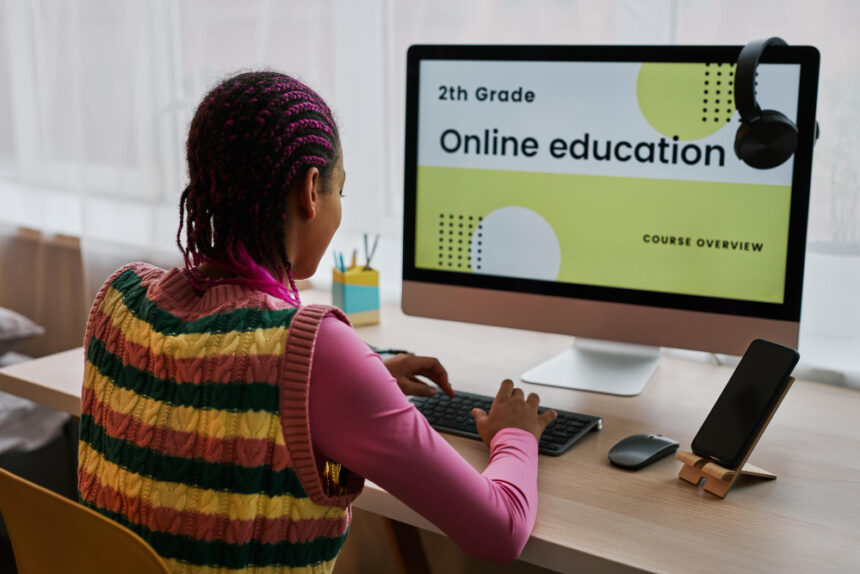In the modern world, education is evolving rapidly, and technology plays a significant role in shaping how we learn. One of the most significant changes in education over the past decade has been the rise of online learning. With the flexibility to learn from anywhere and at any time, online learning offers students the opportunity to personalize their educational experience in ways that traditional classroom settings often cannot.
Online learning isn’t just about watching videos or completing assignments. It’s about tailoring the educational process to suit an individual’s learning preferences, pace, and needs. This customization is particularly important in today’s diverse educational landscape, where students come with varying levels of prior knowledge, learning styles, and personal preferences.
In this article, we will explore how online learning platforms address the unique needs of different learners by personalizing their educational journeys. From self-paced modules to interactive content, online education is reshaping the way we approach learning. As we dive into this topic, we’ll look at how various features of online learning platforms cater to different types of learners, helping them achieve their educational goals more effectively.
The Emergence of Online Learning
Online learning, also known as eLearning, has been around for quite some time, but its popularity surged in recent years, especially after the global pandemic. The flexibility and convenience offered by online courses made it an attractive option for students, educators, and professionals alike.
Traditional education systems often have rigid structures that don’t always accommodate students’ unique needs or learning preferences. In contrast, online learning allows for more flexibility, enabling students to access course materials at any time and from any place. This flexibility is crucial in meeting the diverse needs of students from all walks of life, whether they are returning to education later in life or balancing work and family commitments with their studies.
As technology continues to advance, the ways in which online learning platforms can be tailored to suit individual needs have also grown. Students can now customize their learning experience by choosing courses that match their interests, pace, and learning style. Whether it’s a visual learner, an auditory learner, or a kinesthetic learner, online education provides a platform where students can choose learning methods that best suit their preferences.
Understanding Different Learning Styles
Before diving into how online learning caters to different learning styles, it’s essential to understand what those learning styles are. Psychologists and educators have identified several distinct types of learners based on the way they absorb and process information. These styles include visual, auditory, kinesthetic, and reading/writing preferences.
- Visual Learners: Visual learners retain information better when it is presented in the form of images, charts, graphs, and other visual aids. These learners often find it easier to remember information when it is associated with a picture or diagram.
- Auditory Learners: Auditory learners, on the other hand, learn best when they can hear information. Lectures, podcasts, and group discussions are particularly beneficial for these learners. They may struggle with written instructions but excel when listening to explanations.
- Kinesthetic Learners: Kinesthetic learners prefer a hands-on approach to learning. They learn best when they can physically engage with the material, whether it’s through experiments, role-playing, or other interactive activities.
- Reading/Writing Learners: These learners excel when they can read and write as a means of processing information. They may prefer to take notes, read textbooks, or write essays to help them understand and remember material.
Online learning platforms have the unique ability to cater to each of these learning styles. Whether through video lectures, audio resources, interactive simulations, or written content, online education can be adapted to meet the preferences of a wide range of learners.
Flexibility in Learning Pace
One of the most significant advantages of online learning is the ability to learn at your own pace. In a traditional classroom, students are often bound by the pace set by the instructor. Some students may find the pace too fast, while others may feel that it is too slow.
Online learning solves this problem by offering self-paced courses. Students can take the time they need to fully understand a concept before moving on to the next one. If a student struggles with a particular topic, they can revisit the material as many times as needed, without feeling rushed. Conversely, students who grasp concepts quickly can move ahead without being held back.
This flexibility is particularly beneficial for students with diverse learning needs. For example, a student with a learning disability may need additional time to process information, while another student may need to review materials several times before fully grasping the content. By allowing students to learn at their own pace, online learning ensures that each student has the opportunity to succeed.
Customized Learning Paths
Online learning platforms often allow students to choose their courses and design their own learning path. This customization ensures that learners can focus on the topics that interest them most or are most relevant to their educational goals. For instance, a student pursuing a career in healthcare may choose courses related to biology, anatomy, and patient care, while a student interested in graphic design may choose courses related to digital art and design software.
In many cases, online learning platforms offer pre-built learning paths that are designed to take students through a series of courses in a specific order. However, many platforms also allow learners to modify these paths based on their interests or career goals. For example, if a student wants to skip introductory courses because they already have prior knowledge in the subject, they can do so without wasting time. This level of personalization allows learners to tailor their educational experience to meet their specific needs.
Interactive Learning Tools
Another aspect of online learning that allows for personalization is the use of interactive tools. From discussion forums to quizzes and simulations, online learning platforms offer a range of interactive features that help students engage with the material in different ways.
For visual learners, platforms may include interactive videos or infographics to illustrate complex concepts. For auditory learners, there may be podcasts or voice-over narrations to explain key ideas. Kinesthetic learners might benefit from interactive simulations or hands-on virtual labs that allow them to experiment and practice in a virtual environment. Reading/writing learners can engage with written content, including articles, e-books, and research papers, to deepen their understanding of the subject matter.
By incorporating these interactive elements, online learning platforms allow students to engage with the material in ways that align with their individual learning styles. This engagement helps reinforce the material, making it more likely that students will retain and apply what they have learned.
Providing Immediate Feedback
Immediate feedback is another feature of online learning that can help personalize the educational experience. In traditional classrooms, students often have to wait for assignments to be graded before receiving feedback. However, in online learning, many platforms provide instant feedback on quizzes, assignments, and interactive exercises.
This immediate feedback helps students understand where they may be going wrong and allows them to make corrections before moving on to the next topic. It also helps students stay motivated by providing a sense of progress as they complete assessments and receive feedback on their work.
Additionally, many online learning platforms offer personalized feedback through automated grading systems or instructor comments. This feedback is often more detailed and specific than what a student might receive in a traditional classroom, which can help students understand their strengths and areas for improvement more clearly.
The Role of Artificial Intelligence in Personalizing Learning
Artificial intelligence (AI) is playing an increasingly important role in online learning. Many online learning platforms now use AI to track students’ progress, analyze their performance, and recommend personalized learning paths. By analyzing data such as quiz scores, time spent on tasks, and engagement with course materials, AI can identify areas where a student may be struggling and suggest targeted resources to help them improve.
For example, if a student is having difficulty with a specific concept, the platform might recommend additional readings, videos, or practice exercises on that topic. Alternatively, if a student excels in a particular area, the AI might suggest advanced materials to challenge them further. This personalized approach ensures that students receive the support they need to succeed, without feeling overwhelmed by material that is too difficult or too easy.
Benefits of Personalized Online Learning
There are many benefits to personalized online learning, both for students and educators. For students, personalized learning can lead to better academic performance, increased motivation, and a more fulfilling educational experience. By allowing students to learn in a way that suits their preferences, online learning empowers them to take ownership of their education.
Educators also benefit from the ability to personalize the learning experience. Online platforms provide instructors with data on student performance, allowing them to identify which students need extra support and which students are excelling. This data-driven approach helps educators tailor their teaching strategies to meet the needs of individual students, ensuring that no one is left behind.
Furthermore, personalized online learning allows for greater accessibility. Students with disabilities, for example, can benefit from features such as closed captioning, screen readers, or the ability to adjust the pace of their learning. These accommodations make it possible for a wider range of students to succeed in an online learning environment.
The Future of Personalized Online Learning
The future of online learning is bright, and we can expect to see even more advancements in personalized education. As technology continues to evolve, online learning platforms will likely incorporate more sophisticated AI, augmented reality, and virtual reality tools to enhance the learning experience.
Moreover, as more students and educators embrace online learning, there will be greater collaboration and innovation in the field. We can expect to see new teaching methods, tools, and resources that cater to even more diverse learning styles and needs. The ultimate goal is to create an educational system that is truly personalized, inclusive, and accessible to all learners.
Conclusion
Online learning offers tremendous opportunities for personalizing education and catering to the diverse needs of students. From flexible learning paths to interactive tools and immediate feedback, online learning platforms are designed to help students succeed by providing an individualized educational experience. As technology continues to advance, the potential for online learning to further personalize and enhance the educational journey is limitless. Whether you’re a visual, auditory, kinesthetic, or reading/writing learner, online education offers something for everyone, making it an invaluable tool in today’s ever-evolving educational landscape.

